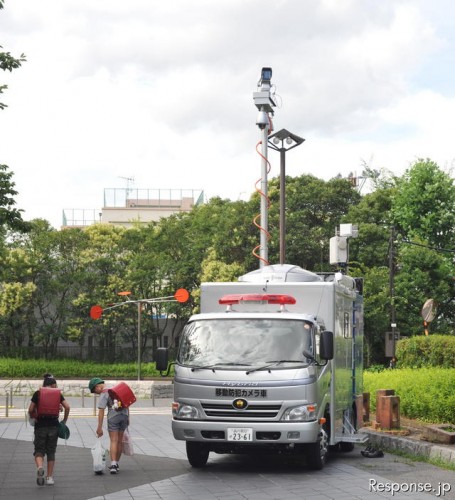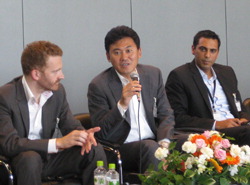I realize I am somewhat late to this, but there’s been a flare-up of interest in “saving the JET Program” ever since the new government’s budget review panel apparently requested the internal affairs ministry to reform the program.
It’s been hard for me to figure out exactly what is going on, but judging from reading through the review results (PDF) and conclusions of the panel (helpfully posted by a commenter on the jetprogramme.org forum), my understanding is this:
As part of the review of the nationally subsidized “internationalization” operations of local governments, some argued for the JET Program to be eliminated. In the end, the panel concluded that the program deserves closer scrutiny in terms of how much of the costs local governments are responsible for, the status of overseas offices with questionable usefulness, and whether the 23-year-old program is meeting the needs of Japanese people today. The “conclusions” take the form of a formal request to the Ministry of Internal Affairs and Communication. Interestingly, I didn’t know that some revenue from the Japanese national lottery goes to fund the JET Program, which was also something at least one panel member objected to.
Ultimately, I would agree with Washington-based Sankei senior writer Yoshihisa Komori who sees the JET Program as necessary to spread understanding and good will toward Japan, even while admitting the need for some reforms and re-focusing of its mission. He cites the example of his acquaintance Irwin, an African-American who as a JET learned the way of bushido through judo lessons on the side.
Why Japan really needs the JET Program
As Komori emphasized, JET alumni are some of the best friends overseas Japan could hope for. They often go to work in government and industry, and their familiarity with Japan produces both good will and a smooth working relationship in many cases. That’s a point I noted when JET turned 20 back in 2006.
But I would add a perhaps more important reason for continuing JET – a reliable supply of Japanese-speaking native English speakers. While JET has proven successful in some ways, it has failed miserably in one crucial other – by and large, Japanese people still can’t speak English! Obviously, this isn’t JET’s fault. Intentionally or not, Japan’s education system produces people with a large English vocabulary that they cannot put to practical use, creating a “Berlin Wall” separating the majority of Japanese from meaningful contact with the English-speaking world.
The JET Program has brought tens of thousands of native English speakers to Japan. Some of them get very good at Japanese. These people can then make careers for themselves as translators, interpreters, or “gaijin gophers” wherever they work, filling the gaps created by a paucity of English ability among the general workforce. I am not sure what Japan was like 20 years ago, but this need remains vital today.
There is a large population of private-sector ESL teachers as well. However, the advantages of the JET Program include a rigorous admissions process and a generous compensation package, which help guarantee a positive experience and make the program look better on resumes. Private-sector English jobs have turned out to be potentially very unstable, so keeping this “public option” might be a good idea.
Hopefully, the budget reviewers and the internal affairs ministry will understand this message. Komori-san, head back to Tokyo and make your case!






 The reference to the child “demon” may not be familiar to everyone. It refers to a somewhat famous case that rocked Japan in the early 1990s, when a father (with the apparent approval and support of his wife) submitted a birth certificate to the municipal office that named his son Akuma, using the kanji characters for demon. Most people think the municipal office rejected the name and the parents had to choose a different name. But the case was actually more complex, and dragged on for several months, and the parents actually won a court case they filed against the city–only after this court victory did they chose to initiate a compromise that brought the fiasco to a close.
The reference to the child “demon” may not be familiar to everyone. It refers to a somewhat famous case that rocked Japan in the early 1990s, when a father (with the apparent approval and support of his wife) submitted a birth certificate to the municipal office that named his son Akuma, using the kanji characters for demon. Most people think the municipal office rejected the name and the parents had to choose a different name. But the case was actually more complex, and dragged on for several months, and the parents actually won a court case they filed against the city–only after this court victory did they chose to initiate a compromise that brought the fiasco to a close.